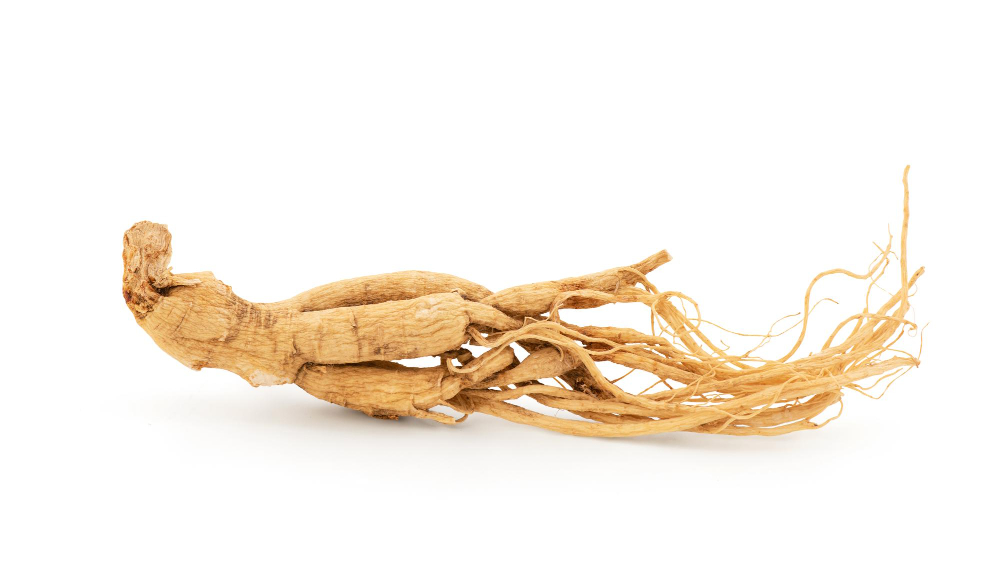Our organic ginseng supply chain
Panax ginseng C.A Meyer

The responsible Panax ginseng supply chain
Dis you know ?
According to a Chinese legend, ginseng is said to have been created when a powerful lightning bolt struck the water of a mountain stream. The fusion of the four elements – earth, air, water and fire – gave this plant many medicinal virtues. Ever since, the Chinese refer to it as “Flower of Life” or “Root of Life”.
Origin and use of Panax ginseng ?
Ginseng or Panax ginseng C.A Meyer is native of Asia and could date back to the Tang Dynasty. Its pharmacological activity comes from the ginsenosides it contains.
Ginseng comes from the Chinese word « renshen » that means « Human Body’s shape » because of its shape similarity.
It is an adaptogenic plant due to its capacity to increase resistance to various stressors: chemical, biological & physical. In greek, “Panax” refers to “panacea”, a remedy supposed to cure all diseases.

Where is Panax ginseng grown?
For more than 15 years, we have been working with our Chinese partner.
Plants are growing in cold temperate regions of north-eastern China.

What are the optimum conditions of production for the good development of our ginseng?
Ginseng prefers light, well-drained and acidic soils. It needs a cool, humid environment to be able to flourish peacefully. Northeast of China naturally offers these conditions.
Seedlings are planted and covered with tarps to create shaded areas. They are required to avoid burns on the leaves. Fertilizers used on land are only organic.
Panax ginseng is a plant that needs time to grow well. We have to wait at least 5 years before collecting it ! Between September and October, ginseng can be harvested.
Once harvested, a fresh root will weigh about 50g !

.
A sustainable cultivation respectful of the environment
Panax ginseng tends to impoverish the soil. To overcome this phenomenon, a rotation is established to avoid making the soil infertile. After production of Panax ginseng, the land is put at rest with a tree planting for over 10 years.
By-products from extraction are used to make paper or in animal feed.
How are dry ginseng extracts produced?
The roots are harvested by hand. Then they are washed, dried, cut and homogenized through a blender.
Root drying is made with proper ventilation to reduce drying time and moisture.The optimum drying temperature is between 30 and 50°C.
A process of extraction is performed with water only
Once the extraction is complete, the extract is subjected to spray-drying to obtain a powder.
We proceed to quality control analysis with Pharmanager’s team directly on the extraction site. We use advanced analytical techniques such as HPLC to check if Panax ginseng is compliant and not adulterated. Thus, the extract will have to meet the highest quality standards.


Is this production process polluting ?
A sewage treatment plant has been built and the production wastewater is treated properly before being discharged.
Benefits of Panax ginseng
Panax ginseng has many health benefits. The best known are undoubtedly its stimulating properties both on a physical level and on cognitive function. Indeed, ginseng improves physical performance. It helps fight fatigue and boosts the body’s resistance to stress. In addition, it supports memory performance and contributes to good cognitive performance. This is why ginseng is one of the so-called “adaptogenic” plants.
Ginseng is also used for stress and immunity because it stimulates the production of T-cells which are an integral part of the immune system.1
To conclude, Panax ginseng has over 35 health claims tolerated by the European Commission !
1. Sellami M, Slimeni O, Pokrywka A, Kuvačić G, D Hayes L, Milic M, Padulo J. . J Int Soc Sports Nutr. 2018 Mar 15;15:14.
